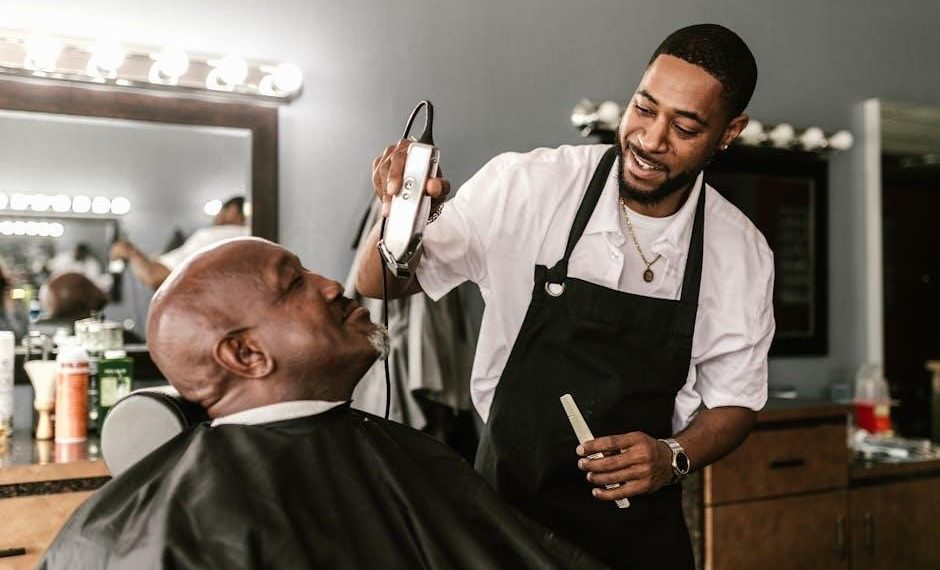the barber hairstyle guide
Barber hairstyles are a cornerstone of men’s grooming, blending creativity with precision. Understanding face shape, hair type, and lifestyle helps determine the perfect cut. Essential for self-expression, they offer endless possibilities, from classic undercuts to modern textured designs, ensuring a personalized look that enhances individuality and confidence.
Understanding Face Shape and Hair Type
Identifying your face shape and hair type is crucial for selecting the most flattering hairstyle. Common face shapes include oval, square, round, and triangular, each requiring specific cuts to balance proportions. Hair types range from straight, curly, and wavy to fine, medium, or thick textures, influencing how styles hold and look. For example, oval faces suit most cuts, while round faces benefit from height and angularity. Curly hair thrives with texture-enhancing styles, whereas fine hair needs volume-boosting techniques. Understanding these elements helps barbers craft personalized looks that enhance natural features and create symmetry. This foundational knowledge ensures hairstyles complement individual traits, offering a tailored, confident appearance that aligns with personal style and lifestyle.
Key Factors in Choosing the Right Hairstyle
When selecting a hairstyle, several factors must be considered to ensure the best fit. Lifestyle and maintenance needs are paramount; busy individuals may prefer low-maintenance styles, while others might enjoy more elaborate looks. Face shape and hair type, as previously explored, play a significant role in determining flattering cuts. Personal style and preferences, such as wanting a professional or casual appearance, also guide the decision. Trends and seasonal influences can inspire choices but should align with individual features. Additionally, communication with the barber is crucial—providing clear descriptions or references ensures the desired outcome. Balancing these elements results in a hairstyle that enhances confidence and complements one’s unique traits and daily life. A well-chosen cut can elevate both appearance and self-assurance.
Popular Barber Hairstyles for Men
Men’s popular barber hairstyles include sleek undercuts, stylish quiffs, and trendy fades. Modern designs emphasize texture and versatility, catering to diverse preferences and lifestyles. Timeless choices remain favorites.
Classic Cuts: Undercuts, Pompadours, and Fades
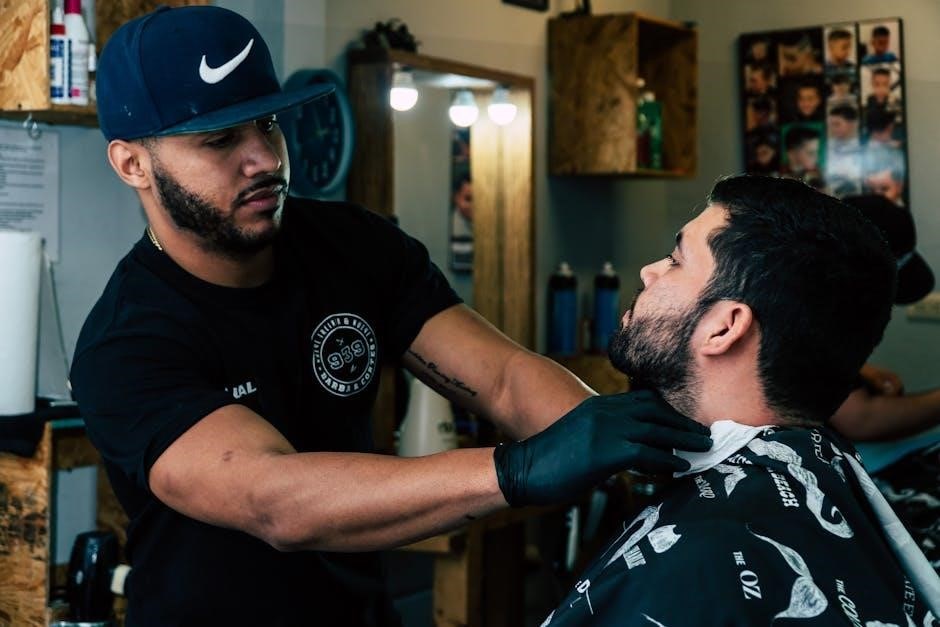
Classic barber cuts like undercuts, pompadours, and fades remain timeless favorites. Undercuts feature buzzed sides with longer tops for a sharp contrast, while pompadours emphasize volume and height. Fades offer a seamless transition from hair to skin, creating a clean, modern look. These styles are versatile, suiting various face shapes and hair types. Undercuts are ideal for those seeking a bold statement, while pompadours add sophistication. Fades provide a subtle yet stylish finish. Each cut can be customized with textures or designs, making them adaptable to individual preferences. Whether for a professional or casual setting, these classic styles continue to dominate barber shops, offering precision and elegance for every man.
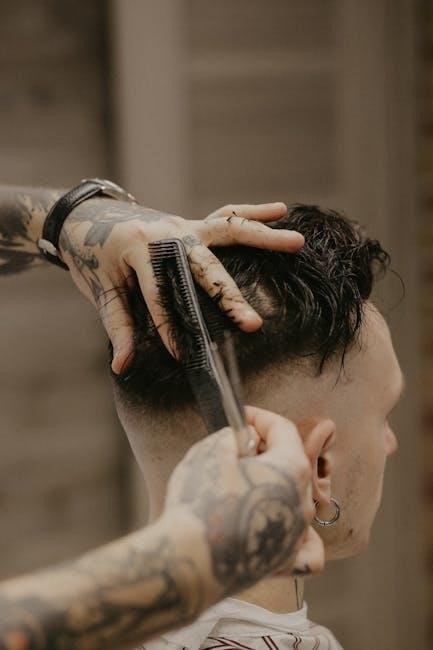
Modern Trends: Quiffs, Side Parts, and Textured Styles
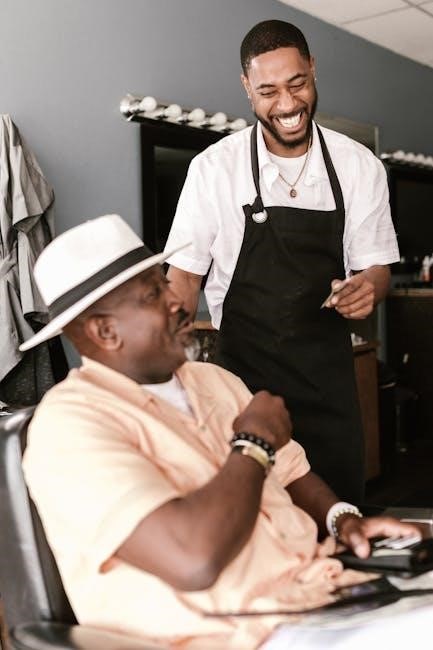
Modern barber trends emphasize versatility and individuality, with styles like quiffs, side parts, and textured cuts leading the way. Quiffs offer a fresh take on the classic pompadour, blending volume with a messy, undone look. Side parts are regaining popularity, adding a touch of sophistication when paired with fades or undercuts. Textured styles, achieved through point-cutting or razor techniques, create a dynamic, layered appearance. These looks cater to diverse preferences, from sleek professionalism to casual charm. Quiffs and textured cuts are perfect for those seeking a modern yet timeless aesthetic, while side parts bring a refined edge. These trends highlight the evolution of barbering, blending traditional techniques with contemporary flair to suit every man’s unique style.
Tools and Equipment Every Barber Needs
A professional barber requires high-quality clippers, scissors, and razors for precision cuts. Essential tools include combs, brushes, and neck dusters for prep and cleanup. Must-have items for every barber.
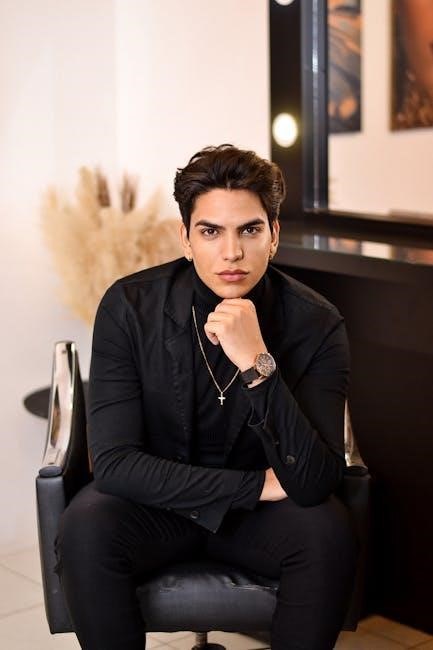
Essential Grooming Tools: Scissors, Clippers, and Razors
Scissors, clippers, and razors are the backbone of a barber’s toolkit, enabling precision and versatility. High-quality scissors are crucial for cutting and shaping hair with accuracy, while clippers are essential for fades, undercuts, and maintaining even lengths. Razors are used for clean shaves and detailing, ensuring sharp lines and smooth finishes. Each tool requires proper maintenance to ensure longevity and hygiene. Regularly cleaning and oiling clippers prevents rust, while sharpening scissors and razors guarantees optimal performance. Investing in durable, professional-grade tools is vital for delivering consistent, high-quality results. These instruments empower barbers to craft a wide range of hairstyles, from classic cuts to modern designs, making them indispensable in the barbering process.
Techniques for Precision Cutting and Styling
Precision cutting and styling are fundamental skills for achieving flawless barber hairstyles. Techniques like fading, layering, and scissor-over-comb are essential for creating defined looks. Fading involves gradual hair length reduction, ensuring seamless transitions between lengths. Layering adds texture and movement, while scissor-over-comb enables precise control for straight lines. Barbers also use razor techniques for sharp edges and clean finishes. Proper tool handling, such as maintaining clipper angles and scissor tension, is crucial for accuracy. Understanding these methods allows barbers to craft customized styles that enhance facial features and hair texture. Regular practice and attention to detail refine these skills, ensuring every cut meets high standards of quality and artistry.
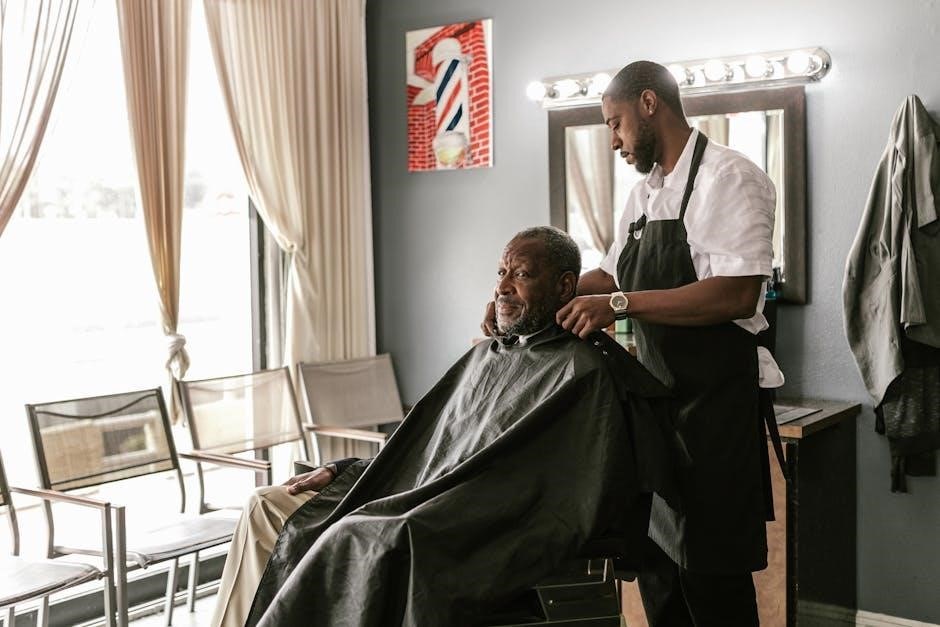
Hair Maintenance and Aftercare
Proper hair maintenance involves using suitable styling products, regular washing, and careful drying. Regular trims and protecting hair from heat ensure longevity and freshness of the style.
Products for Styling: Pomades, Gels, and Oils
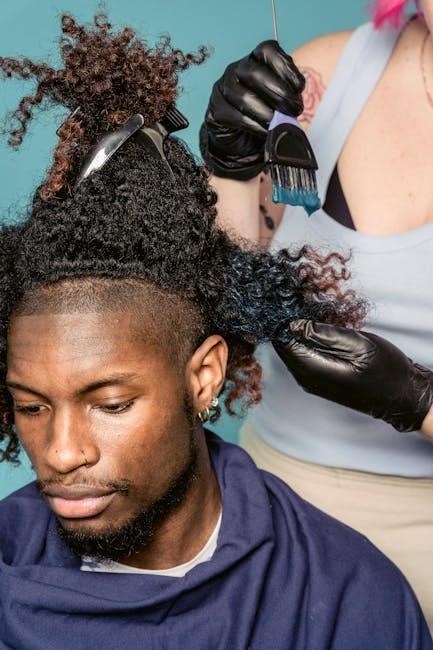
Styling products are essential for maintaining your barber-inspired look. Pomades offer strong hold and a sleek finish, ideal for classic styles like undercuts or pompadours. Gels provide a firm hold and are great for creating defined textures or spikes. Oils add shine and manageability, perfect for taming frizz or enhancing natural textures. Each product serves a unique purpose, catering to different hair types and desired aesthetics. Using the right product ensures your hairstyle stays fresh and polished throughout the day. Experimenting with combinations can also create versatile looks, from messy textures to sharp, clean designs. Proper application and moderation are key to avoiding buildup and keeping your hair healthy.
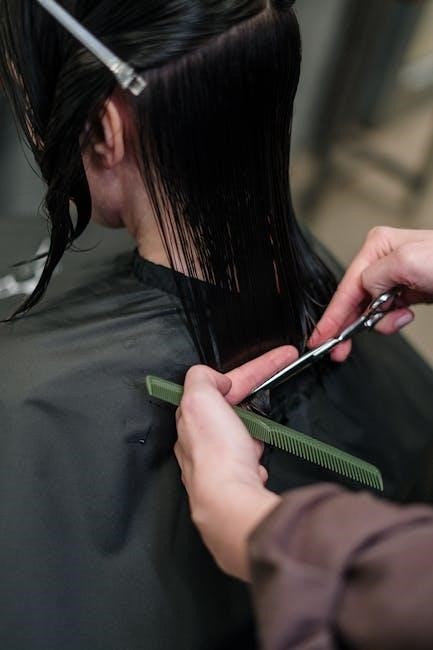
Tips for Keeping Your Hairstyle Fresh
Regular trims are key to maintaining a fresh, polished look. Schedule appointments every 4-6 weeks to prevent split ends and keep your style sharp; Use the right products for your hair type, as overusing styling items can weigh your hair down. Wash your hair 2-3 times a week to avoid oil buildup, and towel-dry gently to prevent damage. For textured styles, use a sea salt spray or matte paste for added definition. Keep your scalp healthy by using a nourishing shampoo and conditioner. Combining these habits ensures your hairstyle stays vibrant and well-groomed, while also protecting your hair’s health. Consistency is the secret to a fresh, barber-perfect look every day.
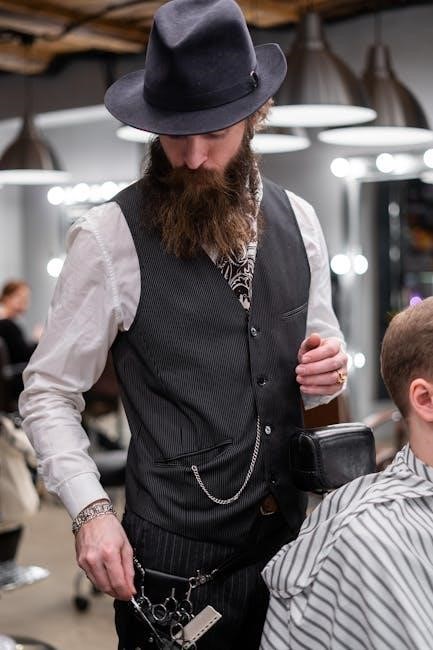
Communication Between Client and Barber
Clear communication is key to achieving the desired hairstyle. Describe your preferences, face shape, and lifestyle to guide the barber. Ask questions to ensure understanding and precision, building trust for a tailored, artistic result.
How to Describe Your Desired Hairstyle
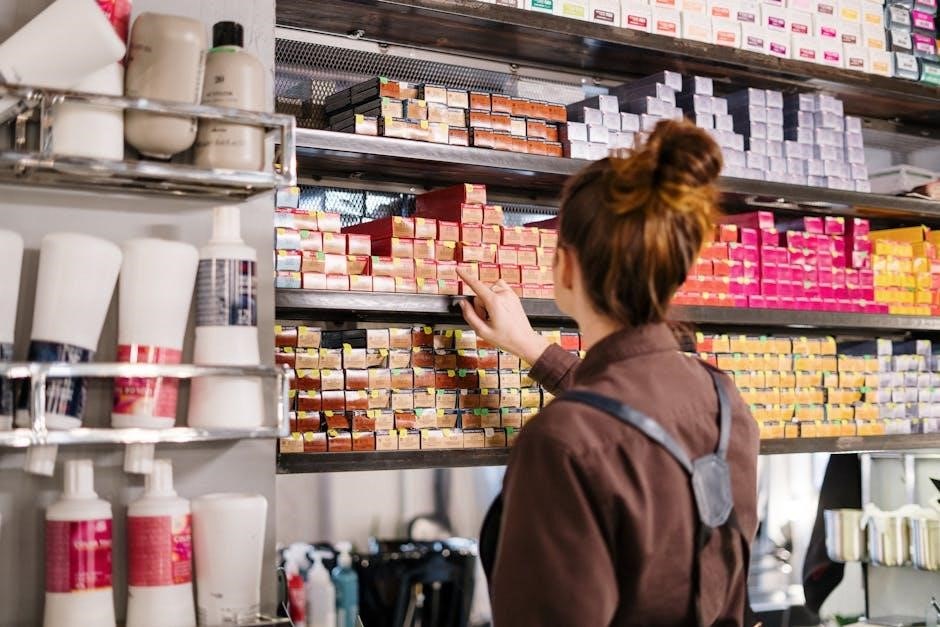
To effectively communicate your hairstyle preferences, start by being specific about the length, layers, and texture you desire. Use descriptive words like “messy,” “spiky,” or “textured” to convey the style’s aesthetic. Mention inspiration from pictures or celebrities to give a visual reference. Ask questions about what would suit your face shape and lifestyle to ensure a flattering cut. Clarify details like the fade gradient or beard styling to align expectations. Open dialogue ensures the barber understands your vision, leading to a personalized and satisfying result. Clear communication is key to achieving the perfect look that matches your identity and preferences.
Questions to Ask Your Barber for the Best Results
Asking the right questions ensures a tailored experience. Start by inquiring, “What style would best suit my face shape and hair type?” This helps align the cut with your features. Ask about maintenance needs, such as “How often should I trim this style?” to maintain its look; Discuss specifics like “How much fade should I go for?” to achieve your desired aesthetic. Clarify styling tips, such as “What products work best for this cut?” to keep it fresh. Openly share your lifestyle, like “I prefer low-maintenance styles,” to guide the barber. These questions ensure a personalized, flattering result that meets your expectations and enhances your confidence.
